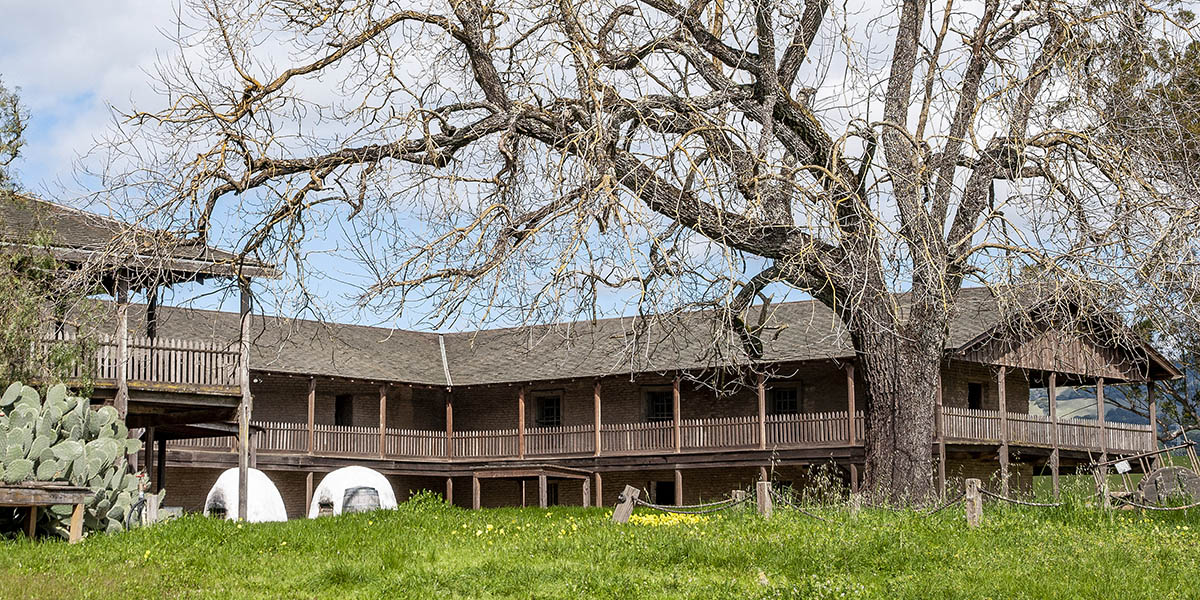Petaluma Adobe

The Petaluma Adobe, a National Historic Landmark, is the largest domestic adobe building remaining in the United States. It was constructed from 1836-1846 by General Mariano G. Vallejo, commandant of the Sonoma pueblo as well as the founder of the towns of Santa Rosa and Petaluma. In 1833, General Vallejo was sent to the region north of San Francisco by Governor Jose Figueroa, to settle the area and maintain a close watch over the Russians at nearby Fort Ross. Following the secularization of Mission San Francisco Solano at Sonoma in 1834, Vallejo received a grant for Rancho Petaluma (an area of land incorporating approximately 33,000 acres) from the Mexican government. Vallejo received a second grant in 1844, increasing his holdings to 67,000 acres, or a 100 square-mile ranch.
The adobe, known historically as El Palacio, or “the palace,” was constructed using Native-American labor. Adobe bricks for construction of the building were made at the site, and hand-hewn redwood timbers were hauled by oxen from the forests of Mendocino County, fifty miles to the north. The adobe is located on a knoll overlooking the Petaluma Valley. The kitchen, storeroom, and workshops for the ranch were located on the ground floor of the adobe, while the second floor housed the living quarters. The adobe served as the headquarters for Vallejo’s vast agricultural enterprise where more than 2000 indigenous people labored. By 1845, Vallejo owned 10,000 head of cattle, 24,000 sheep, and several large herds of horses making him the wealthiest, and one of the most politically powerful men in California. This would all change however, following the occupation of California by the Americans. Several of Vallejo’s land titles were challenged and tied up in litigation for several years. By 1857, Vallejo was forced to sell the Adobe which passed through a succession of owners in the next decades and fell into disrepair. In 1951, the State of California acquired the Adobe and five acres of surrounding land. The Department of Parks and Recreation restored the Adobe.
